I found myself in Syntagma Square, right in the middle of Athens’ energy, waiting for something I’d only seen in photos: the Changing of the Guard by the Evzones.
Watching the Evzones perform their precise, almost silent ritual in front of the Greek Parliament really hit me as a powerful reminder of how much Greece cherishes its history and traditions.
Crowds gathered, the guards moved in perfect sync, and the whole scene felt like Greek culture coming alive right in front of me.
This isn’t just a show for tourists; it’s an hourly display of national pride.
The uniforms look impressive, the guards’ faces remain solemn, and their careful steps totally pulled me in.
Before I realized it, I had goosebumps.

Getting to see the Evzones up close made me feel like I was part of something way bigger than myself—a living piece of Athens that every visitor should catch at least once.
The Evzones: Symbols of Greek Heritage
When I visited, the Evzones instantly brought Greek culture and history to life.
Their presence connects centuries of military tradition, shows off unique uniforms, and honors Greece’s enduring identity.
Who Are the Greek Evzones?
The Evzones are elite ceremonial soldiers who serve as the Presidential Guard in Athens.
I watched them outside the Hellenic Parliament, where they stood almost motionless but absolutely radiated discipline and pride.
Evzones took on their modern role in the 19th century as part of Greece’s security forces.
Young men go through tough selection and training before they can earn this post.
People in Greece see the role as a huge honor, and Evzones are genuine national symbols.
They guard two important sites: the Tomb of the Unknown Soldier and the Presidential Mansion.
Their presence isn’t just for show; it’s a living tribute to Greece’s fight for independence and the spirit of its people.
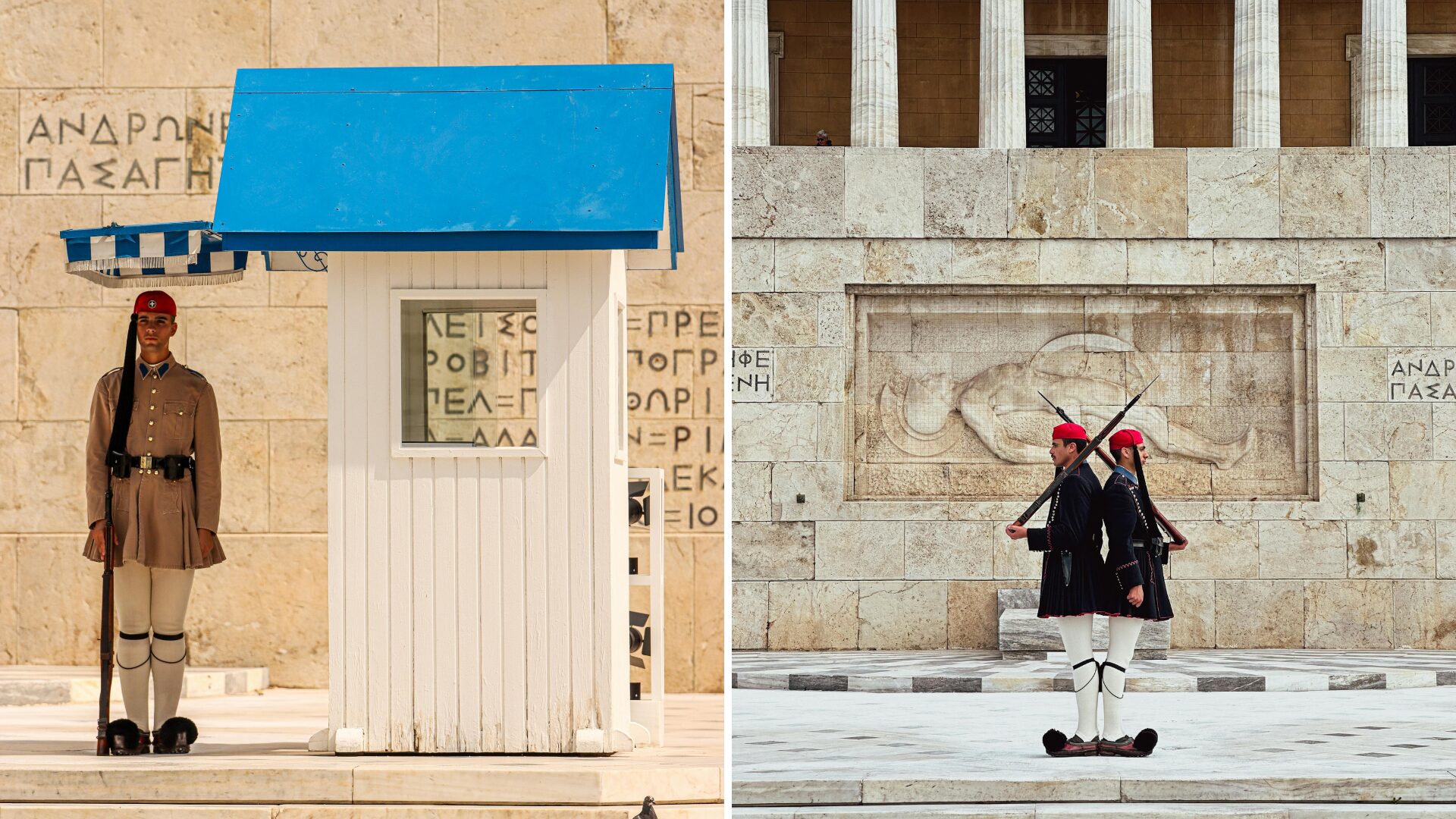
Uniform Significance and Traditions
The first thing I noticed was the traditional uniform.
Every piece has meaning, tied to Greek names and history.
The most famous part is the fustanella, a kilt-like skirt with 400 pleats, said to stand for 400 years of Ottoman rule.
They also wear a red fez, white stockings, and those iconic tsarouchia shoes with big black pom-poms.
During the changing of the guard, every step is slow and rhythmic, almost like a dance.
It’s not just for show—it helps their blood circulate since they have to stand still for so long.
The Evzones’ uniforms are handmade and kept up with real care.
Their look pays tribute to fighters from the Greek War of Independence.
Even the way they handle Greek flags during ceremonies pulls out this strong sense of national pride.

Historical Role in Greek Military
The Evzones’ roots reach back to the early days of modern Greece.
They started as light infantry soldiers and played major roles in campaigns, especially during big conflicts in the 19th and early 20th centuries.
People mention them with respect in stories about bravery and resistance.
Their job is mostly ceremonial now, but the unit’s history is full of action and sacrifice.
The Evzones have deep ties to how Greek security forces grew over time.
Even today, the Greek Orthodox Church honors them in special religious ceremonies.
Their constant presence in Athens keeps history, faith, and patriotism right in the city’s daily life.
Witnessing the Changing of the Guard Ceremony
Watching the Evzones at Syntagma Square really stood out as one of the most distinct experiences in Athens.
The event mixes history, strict routine, and proud tradition in a way that’s hard to shake from your memory.
Location: Syntagma Square and the Tomb of the Unknown Soldier
The ceremony happens right in the heart of Athens, at Syntagma Square.
The Parliament building sits in the background, while the Evzones guard the Tomb of the Unknown Soldier.
The tomb is a simple, solemn monument.
Standing in this busy square, I saw why so many tourists show up every hour.
The plaza is easy to reach on foot, by metro, or by car, and there are plenty of cafes and benches around.
Getting there early landed me a front-row spot near the monument.
I watched the crowd gather—people snapping photos, recording videos, all wanting to catch the ceremony from the best angle.

What to Expect: Rituals and Processions
The Changing of the Guard happens every hour, on the hour.
The Evzones, in their pleated skirts, white stockings, and pom-pom shoes, put on a show that’s both formal and fascinating.
Their march is slow and careful, almost like a dance.
I focused on their precise movements, the click of heels on marble, and how perfectly they performed together.
When not changing, the guards stay completely still.
When the new pair arrives, both sets of Evzones go through a series of exact gestures and exchanges, all to honor the Tomb of the Unknown Soldier.
You can feel how important this duty is to them and to the city.
Best Times and Travel Tips for Visitors
The ceremony happens every hour, but Sunday at 11 am is special.
That’s when the “Grand Change” takes place, with a full procession and more Evzones.
If you want the most impressive version, plan your visit then.
To dodge big crowds, I noticed that weekdays early in the morning or late afternoon are usually quieter.
Public transport works well, but walking from nearby neighborhoods is easy too.
Bring water and sun protection, especially in spring and summer—Syntagma Square can get hot and packed.
Here’s a quick checklist for visitors:
- Arrive at least 15 minutes early.
- Stand near the front for the best view.
- Stay respectful and quiet during the ceremony.
- Have your camera ready, but don’t block others.
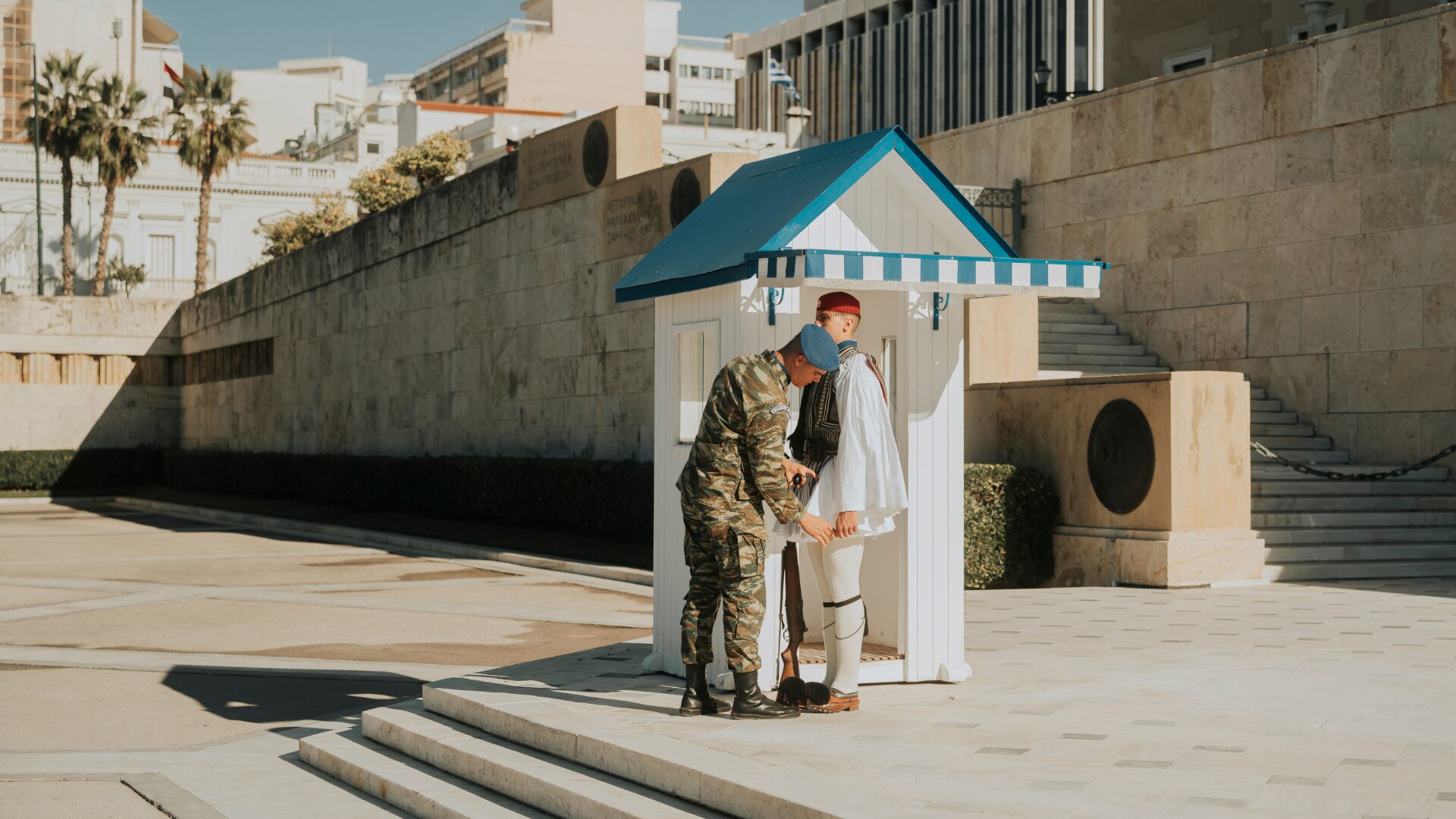
A little planning and respect made the tradition even more meaningful for me.
A Personal Encounter: My Experience and First Impressions
Standing in Syntagma Square, I found myself mixed in with people from all over the world, all drawn to the same event.
The precision of the Greek Evzones, the attention from tourists, and that extra layer of Greek culture made the whole thing stick in my mind.
Capturing the Moment: Emotions and Atmosphere
When the Evzones started their slow march in front of the Parliament, the air seemed to go silent.
Every movement was sharp and practiced, from the lift of their legs to the way their rifles tapped the marble.
I watched their uniforms closely.
The fustanella skirts, white tights, and red tsarouchia shoes—each detail felt loaded with history.
Even as the sun beat down, they stood perfectly still and focused.
For a moment, I forgot about my camera.
The pride in their faces, their frozen expressions, and the respect from everyone watching made me really feel the weight of Greek tradition.
I actually got goosebumps as the ceremony unfolded—each click of their heels seemed to echo national pride.

Interacting with Locals and Fellow Tourists
Before and after the ceremony, I chatted with a few Greeks nearby.
People from Athens explained the Evzones’ role and shared stories about how their uniforms are made by hand.
Some pointed out Greek names and stories in the crowd, making the whole scene feel more personal.
Tourists, just like me, wanted to learn and snap photos.
We swapped tips—like the best photo angles or when to catch quieter hours.
Locals were friendly and patient, sometimes helping visitors pronounce “Evzones” the right way.
Parents with kids explained the ceremony to them, turning it into a mix of learning and curiosity.
Being part of this blend of locals and travelers made the tradition feel more open and welcoming than I expected.
Historical and Cultural Context of the Ceremony
Standing in front of the Greek Parliament, you can’t ignore the deep symbolism in the Evzones’ ritual.
This ceremony isn’t just for show; it’s a living tradition shaped by centuries of occupation, resistance, and national pride.
Legacy of Greek Resistance and Liberation
The Evzones stand for much more than the Presidential Guard.
They trace their roots back to Greek fighters who resisted foreign rule, especially during the Ottoman Empire and the fight for independence.
When I watched the soldiers stand motionless before the Tomb of the Unknown Soldier, I couldn’t help but think about how Greeks once fought bravely against both Ottoman and Nazi occupation.
These guards, in their traditional uniforms, echo the legacy of nationalists who rose against imperialism—from resisting the Turks after Constantinople fell to enduring hardship under German soldiers in World War II.
What struck me is how the ceremony reminds everyone of the Greek people’s ongoing fight for freedom.
Their synchronized steps and stillness aren’t just about discipline.
They’re powerful symbols of the courage that shaped modern Greek history.
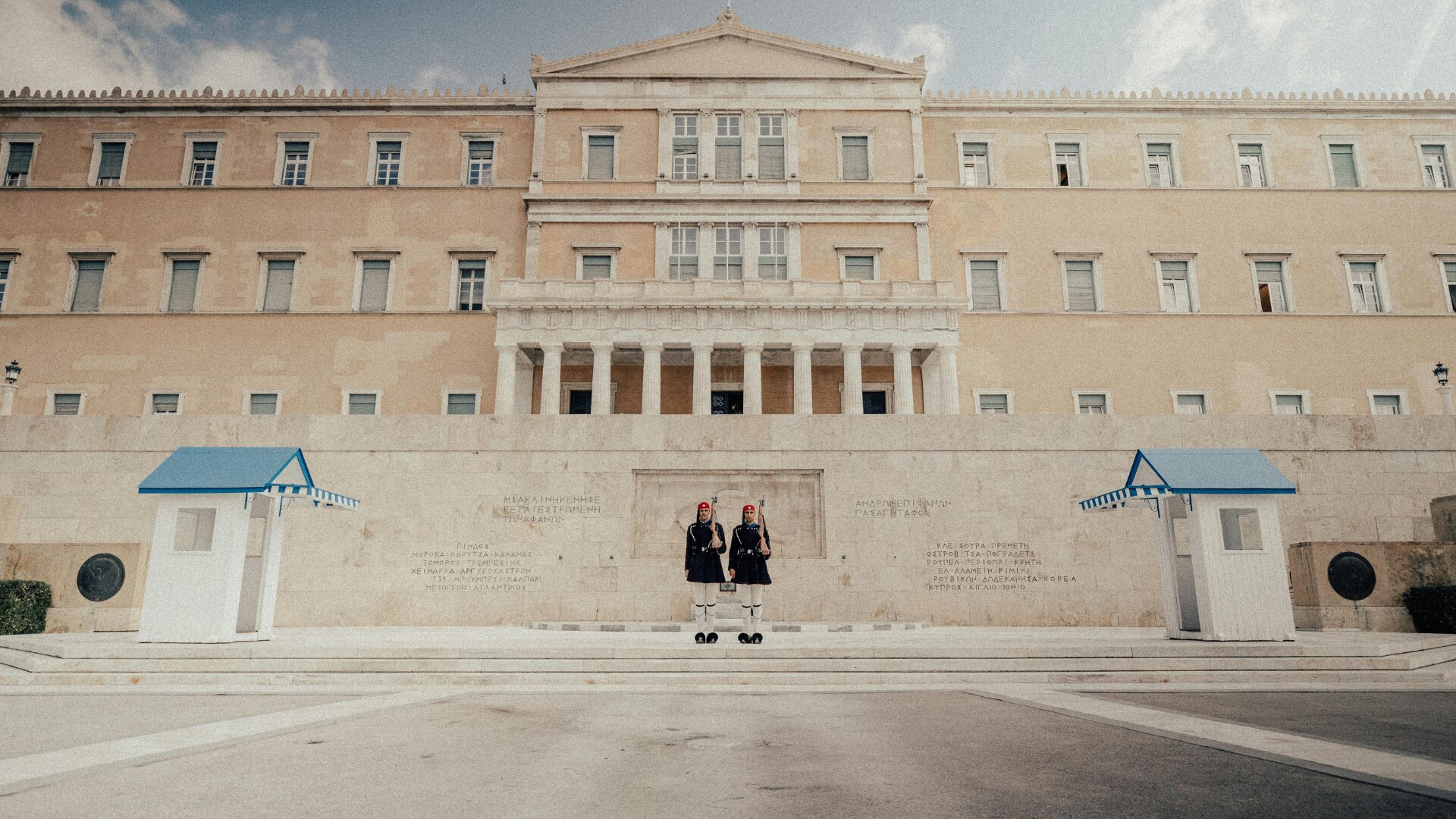
Influence of Empires and Foreign Occupation
Walking through Athens, you feel layers of history everywhere—Roman columns, Byzantine icons, Ottoman arches.
The Evzones’ ceremony ties these eras together, shaped by Greece’s experience under empires like the Byzantines, Romans, and especially the Ottomans.
Over the centuries, Greece faced invasions and foreign armies.
From Alexander the Great’s time in Macedonia to the struggles under Ottoman rule, occupation left deep marks on Greek life.
The guards’ uniforms blend this history.
Their fustanella skirts recall fighters who battled Ottomans, and their red-and-black caps link to Balkan and imperial influences.
Even now, as I hear their measured footsteps on the marble, I feel the shadows of these empires around Syntagma Square.
Monuments and Their Meaning in Greek Politics
The changing of the guard happens right in front of the Tomb of the Unknown Soldier, just outside the Hellenic Parliament.
This spot isn’t random—it connects military sacrifice with modern Greek politics and democracy.
Many monuments in Greece tie back to politics.
The National Council and Parliament Building, both near Syntagma Square, remind visitors that the modern Greek state grew out of moments of liberation from occupation.
The location echoes other political sites.
I remember seeing French troops at the Arc de Triomphe in Paris or the solemnity of Whitehall in London, but Athens’ ceremony feels closer to living memory.
Standing there, the guards’ silent vigil made it clear how events—from Ottoman occupation to the Nazi years under Hitler and Mussolini—shaped political life today.
Every careful step honors the sacrifices that built a free and independent Greece.
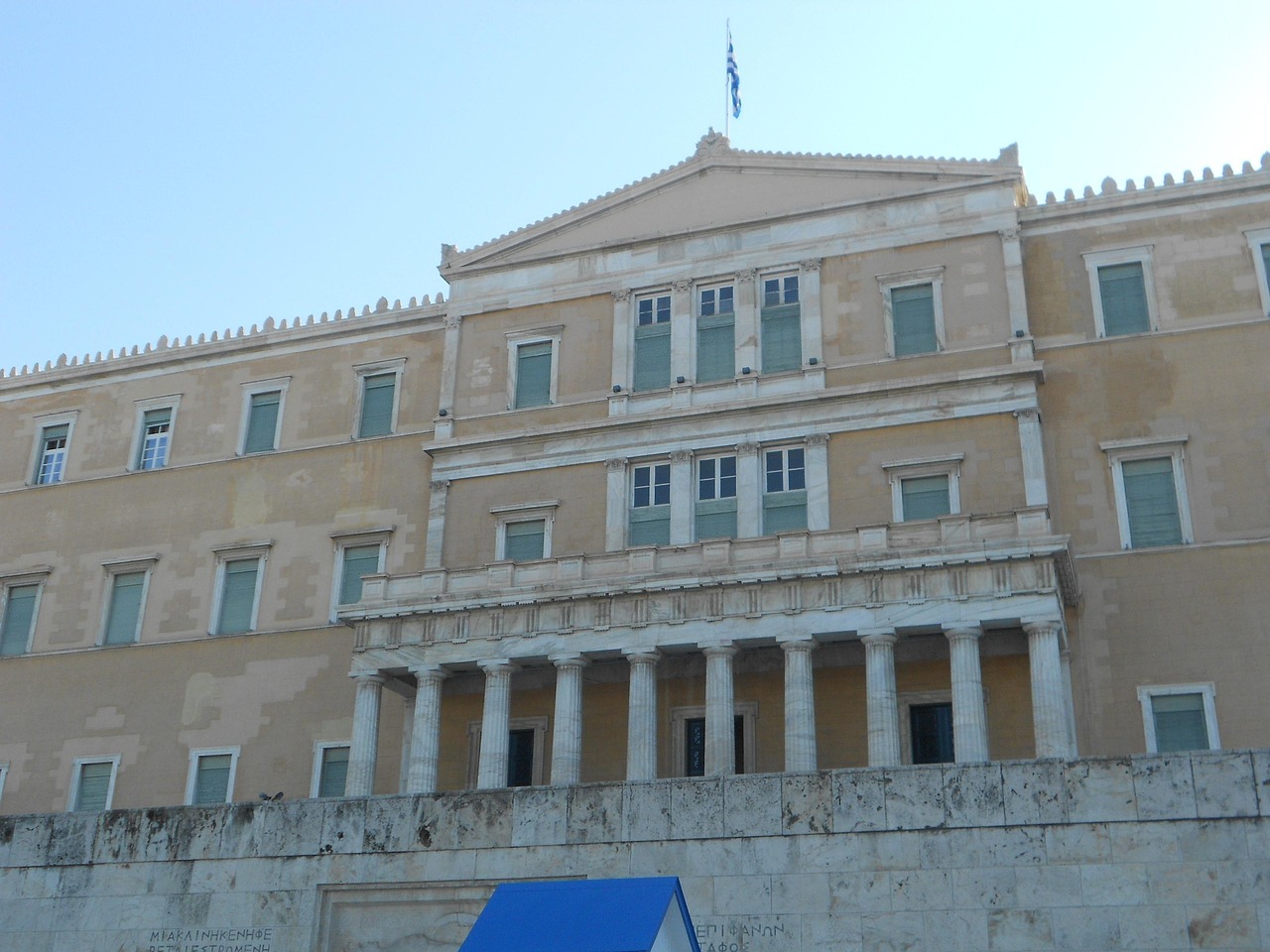
Sights and Experiences Nearby
Athens is overflowing with amazing history and vibrant culture, all within easy reach of Syntagma Square.
After I watched the Changing of the Guard, I felt pulled toward ancient landmarks and local treasures.
Exploring the Acropolis and Parthenon
From Syntagma Square, the Acropolis and Parthenon are just a scenic walk away.
I could see the rocky hill rising above the city, and climbing up gave me a real sense of Athens’ past.
The Parthenon, with its tall marble columns, stands as a reminder of Greek art and achievement.
I wandered around the ruins, pausing to take in the sweeping views of the city below.
The Acropolis Museum nearby holds statues, pottery, and tools found on the site, which helped me connect the ruins with daily life in ancient Greece.
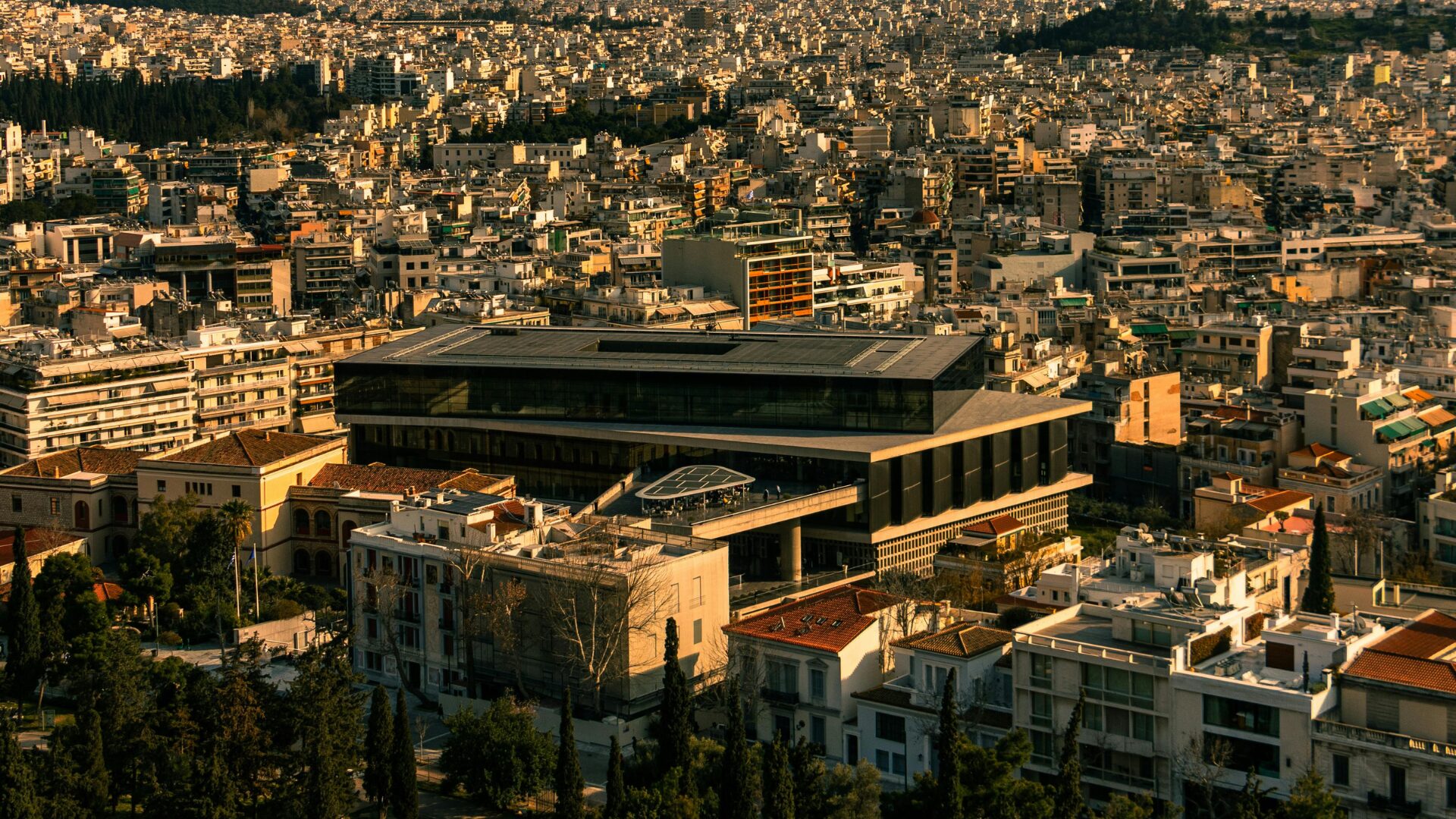
You can buy tickets for the Acropolis and its museum in advance, which saved me time.
I suggest visiting early in the morning to avoid crowds and heat—let the history really sink in.
Touching the stones and looking out at Athens made the stories I’d read in school suddenly feel real.
Cultural Insights and Hidden Gems
Just beyond the big attractions, I wandered into winding streets dotted with small cafes and quirky shops.
Plaka, which happens to be one of Athens’ oldest neighborhoods, sits just a short walk from Syntagma.
Stone paths led me past buildings with brightly painted doors. Friendly locals actually greeted each other by name, which felt surprisingly warm.
I grabbed coffee with loukoumades (those addictive Greek honey donuts) and just sat for a while, watching people live their everyday lives.

In the side alleys, I stumbled upon art galleries and tiny museums. These places showcased modern Greek culture right alongside ancient traditions.
As I explored these corners, I realized the spirit of Athens doesn’t just hide in grand monuments. You’ll find it in the daily rhythms—traditions, flavors, music—all of it made my visit feel a lot more personal.

